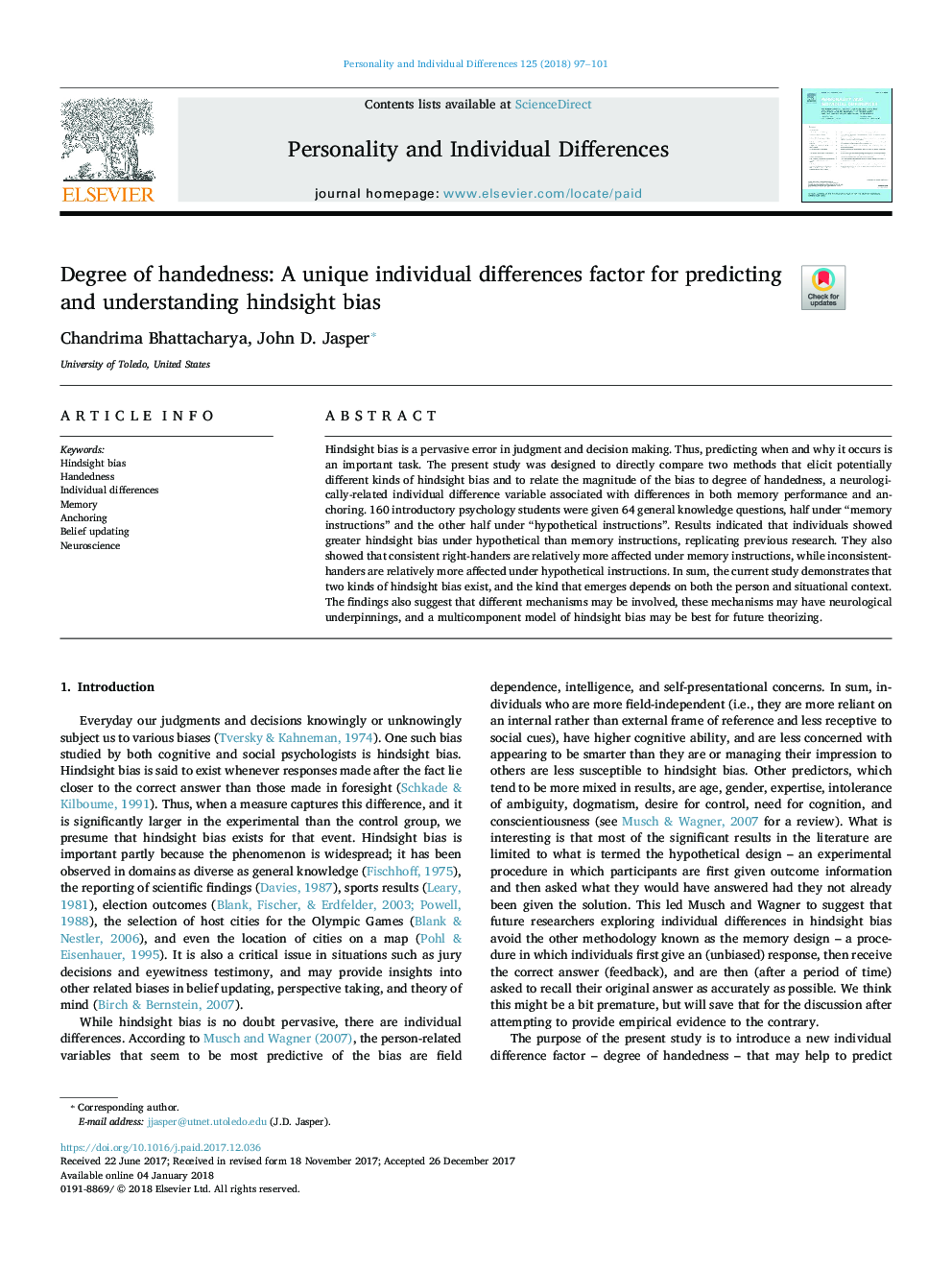| Article ID | Journal | Published Year | Pages | File Type |
|---|---|---|---|---|
| 7249016 | Personality and Individual Differences | 2018 | 5 Pages |
Abstract
Hindsight bias is a pervasive error in judgment and decision making. Thus, predicting when and why it occurs is an important task. The present study was designed to directly compare two methods that elicit potentially different kinds of hindsight bias and to relate the magnitude of the bias to degree of handedness, a neurologically-related individual difference variable associated with differences in both memory performance and anchoring. 160 introductory psychology students were given 64 general knowledge questions, half under “memory instructions” and the other half under “hypothetical instructions”. Results indicated that individuals showed greater hindsight bias under hypothetical than memory instructions, replicating previous research. They also showed that consistent right-handers are relatively more affected under memory instructions, while inconsistent-handers are relatively more affected under hypothetical instructions. In sum, the current study demonstrates that two kinds of hindsight bias exist, and the kind that emerges depends on both the person and situational context. The findings also suggest that different mechanisms may be involved, these mechanisms may have neurological underpinnings, and a multicomponent model of hindsight bias may be best for future theorizing.
Related Topics
Life Sciences
Neuroscience
Behavioral Neuroscience
Authors
Chandrima Bhattacharya, John D. Jasper,
